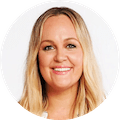Contents
No matter what kind of business you’re in, understanding Intellectual Property is one of the most important steps in establishing your brand.
When you think of McDonalds, Weet-Bix, Disney or Qantas, you should have a very clear idea of what that brand is all about. They all have their own distinct story and character. Well, this is something that takes some time and effort to do, so businesses need to make sure that brand is protected. The last thing you want is someone else benefiting from your creative ideas.
Trade marks are one of the key aspects of Intellectual Property – it differentiates your product or service from others, and is basically the face of your brand. This might take the form of a logo, slogan or even a scent. The main idea is that you own it, so you wouldn’t want anyone else taking it (this is similar but different to copyright – you can read more about the differences between the two here).
This article will go through the implications of a trade mark infringement and how you can protect your brand.
What Is A Trade Mark Infringement?
A Trade Mark Infringement is when another business tries to use an existing trade mark. As you might already know, businesses need to register their trademark with a government body called IP Australia.
So, if your trade mark is registered, other people can’t use it. If they do, you’ll need to start looking at ways you can make a claim.
How Do I Know If Someone Has Infringed My Trademark?
If you think someone is infringing your trade mark, your first step is to look at the Trade Marks Act 1995 (Cth). More specifically, section 120 of the Act tells you the criteria for when someone has infringed a registered trade mark.
Generally speaking, a person may be taken to infringe a trade mark in the following circumstances:
- The trade mark is well known in Australia
- The person uses a sign that is substantially identical with, or deceptively similar to, the registered trade mark
- The goods or services are closely connected to those of the registered trade mark
Let’s look at these three circumstances in more detail.
Trade mark is ‘well known’
Even if a trade mark has a very weak connection to the original one, it can still count as ‘infringement’ if that trade mark is considered ‘well known’. In other words, even if the person infringing had a completely different product to the original owner, it would still cause people to think of the registered trade mark, and this amounts to infringement.
Whether or not the brand is well known is up to the Court.
Trade mark is substantially identical with, or deceptively similar to, the registered trade mark
When deciding whether two trade marks are ‘deceptively similar’, you’d need to look at the visual impression it imposes on a person.
- What are the similarities and differences?
- Would they give the same impression at first glance?
- What are some of the main features?
If you’re still unsure, section 10 of the Trade Marks Act defines ‘deceptively similar’ as resembling the other trade mark so closely that “it is likely to deceive or cause confusion.” For a better understanding, let’s look at a real life example.
| Example: Clothing The Gap vs Gap After a two year long fight, small business Clothing The Gap made the decision to rebrand to ‘Clothing The Gaps’ after receiving a cease-and-desist letter from US company The Gap. Even though The Gap was never something they considered when naming their store, co-founder Laura Thompson decided she did not want the fight to escalate. Rather, they focused on separate campaigns that were more involved in their overall goals as a business. Clothing The Gaps never intended for it to be connected to The Gap Inc, however they are both fashion brands using the same word in their name which may have been a significant factor in deciding that it amounted to a trade mark infringement. |
Goods or services are closely connected to those of the registered trade mark, or they’re under the same description
If the products of the infringer are closely connected to those of the original trade mark owner, then this can amount to infringement. However, it’s also worth noting that products don’t need to be registered under the same description to be considered infringement.
The best way to decide whether there is such a connection is if there is any likelihood of confusion between the two (the onus falls on the defendant in this situation).
How Common Are They?
While it’s common to face trade mark disputes, actual legal proceedings are far less common. This is because people try to resolve the matter in the early stages (we’ll discuss these options shortly).
Nonetheless, trade mark disputes are still quite common. This is because there are a lot of similar trademarks out there, and business owners are very quick to protect their brand from any threats.
In addition, the circumstances listed in the Act can be interpreted quite broadly. For example, how close is ‘closely connected’? At what point do we decide that the two trade marks are, in fact, different?
Some real life examples can tell us exactly how it is decided that someone has infringed a trade mark.
| Example: Airbnb v Airtasker In 2019, Airbnb commenced legal proceedings against Airtasker, alleging that the company was infringing their trademark. They argued that their brand is more well known, and the identical use of the word ‘air’ would cause some consumers to think that Airtasker is a service offered by Airbnb. While the companies offer different services, their names can be considered ‘substantially identical’. As such, customers are likely to be confused as to their connection. Up to now, Airtasker has chosen not to respond to these claims, however it poses a barrier to their proposed trade mark application in Europe. We have yet to see what Airtasker chooses to do during this dispute. Trade marks can get a little complex when placed in an international context – we’ve written more about this here. |
My Trade Mark Is Being Infringed – What Now?
Unfortunately, it’s quite common to come across an attempt to steal your creative ideas. In such a competitive market, it’s important to keep an eye out for these threats.
So, let’s say someone has tried to register a trade mark that is identical to yours. What are your options?
The first thing you’d want to do is seek professional advice (from a lawyer, of course!). In fact, you’d need to do this as soon as possible – minimising delays will also work in your favour in relation to financial compensation.
Once you start speaking with a lawyer, you will most likely be asked to send a Letter of Demand to the person allegedly infringing your trademark. This letter should cover things like:
- Your rights in relation to your trade mark
- Specific details of what the alleged infringer did (in other words, how they breached those rights)
- Steps the alleged infringer should take to stop those breaches (for example, change their business name)
- Outline what steps will be taken if the breaches continue (for example, state that you’ll resort to Alternative Dispute Resolution and potentially legal proceedings).
The Letter of Demand is important as it will basically set out what will happen and what options the other party has, so it’s best to have a lawyer draft this for you. If the other party does not respond to your letter, you may need to turn to ADR. This just means you’ll need to go through a process of mediation with them, and if this still fails, you may need to take the dispute to court.
Make Sure You Have Legal Grounds
With so many trade marks being registered in Australia, it’s very common for business owners to get personally attached to their brand and any threats to it. If you suspect that someone is infringing your trademark, it’s important to check that you actually have legal grounds to make a claim against them. You wouldn’t want to threaten someone with legal proceedings if it’s not actually likely that they’ve breached anything.
In fact, the other party can actually sue you for making groundless claims or threats against them. So, it’s worth double checking section 120 of the Trade Marks Act before taking any steps in the heat of the moment. Even better, it’s worth running it by a lawyer before deciding to make a claim.
What If I Infringed Someone Else’s Trademark?
All business owners should be checking whether or not a trade mark already exists before they try to register their own. This way, you can ensure you’re not accidentally using someone else’s IP. Even if you don’t think you are, there may be cases where your trade mark will remind customers of another brand and this might amount to trade mark infringement (depending on the circumstances, of course).
Receiving a Letter of Demand is not always the greatest news, and we know it can get emotional or upsetting. If you find yourself being accused of trade mark infringement, the first thing you should do is have a lawyer review the Letter of Demand you’ve received, otherwise you may end up agreeing to terms that you shouldn’t.
At the end of the day, you also want to protect your business from groundless claims (if this is the case).
What Are The Penalties For Trademark Infringement?
As with most other cases, you should try to avoid going to court. However, if the dispute isn’t going as smoothly as planned and you do land yourself in court, the court may provide relief according to section 126 of the Trade Marks Act.
So, what kind of penalties are we talking about?
Injunction
If the court orders an injunction, this just means that the infringer will need to cease their use of the trade mark or sign. The court can also impose additional conditions at their discretion.
Damages
Depending on what the registered trade mark owner prefers, the court can grant that owner either damages or an account of profits. This just means the owner will receive financial compensation, or they’ll receive the profit that the infringer made from their breach.
However, neither of these remedies will be provided if:
- The infringer has sought to have their registered trade mark removed from the register
- The court decides that the registered trademark was not used in good faith during the infringement claims
The court may also grant additional damages depending on a number of considerations, such as:
- The infringer’s conduct
- How the infringer benefited from their breach
- How future infringements can be deterred
Keep in mind that each case will be handled differently by the court, so these penalties should be used as a general guide only.
Next Steps
All business owners should be aware of the steps they can take to protect their trade marks, and how to respond if they’re being accused of trade mark infringement.
Need help applying for a trade mark? Sprintlaw has a team of lawyers who are happy to help. You can reach out to us at team@sprintlaw.com.au or contact us on 1800 730 617 for an obligation-free chat.
Get in touch now!
We'll get back to you within 1 business day.












